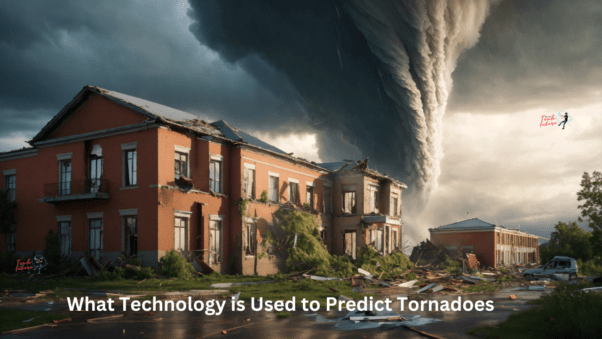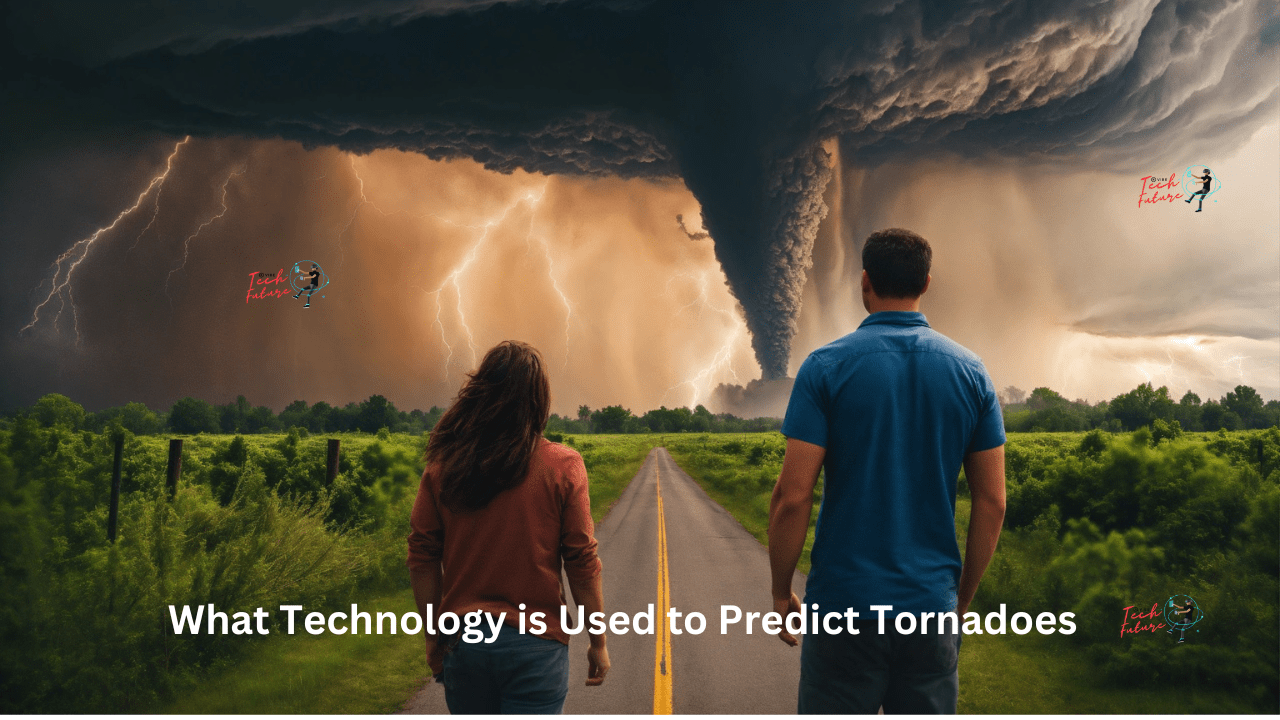Introduction To Technology
Called “nature’s whirling dervishes,” tornadoes can destroy within several minutes. However, meteorologists have become extra adept at predicting those erratic occurrences due to various modern-day technological advancements. Our meteorologists can now see greater truly thanks to technological improvements, which enables them to offer the public important early warnings. Consequently, People have more time to prepare for the looming threat and take action to lessen the effects of those unfavorable storms.
In this article, we will review the various technologies used to predict storms and shed light on their evolution. Methods that protect communities from these destructive forces.
The Importance of Tornado Prediction
In the delicate rhythm of nature, storms emerge as powerful enemies that threaten lives and homes. The main character of an accurate storm forecast becomes the guardian angel who stands between us and their destructive effects. Early warning systems act as watchdogs, giving communities precious time to evacuate and prepare, offering a glimmer of hope in difficult times.
Now, let’s begin our journey through the technical landscape of storm forecasting. We will tell the story of our quest to understand and predict the swirling forces of nature. From the wisdom passed down from climate traditions to the modern tools that lead us into the future, this is a story that illustrates our shared commitment to protecting life and building resilient communities against the unpredictable dances of nature. Is.
Historical Methods
Storm forecasting was a fascinating voyage into the mysteries of the sky in the early days of meteorology. Meteorologists back then were like true detectives, figuring out the mysteries concealed in the clouds with the use of just rudimentary tools and excellent vision. They analyzed the subtle dance of cloud patterns, observed changing winds, and paid attention to any visual cues that signaled the birth of a storm.
These early methods were like the first strokes on a canvas, creating the initial picture of a storm forecast. However, as development progressed, it became clear that more advanced equipment was needed. The accuracy limits of these early techniques led to a drive for innovation, prompting meteorologists to develop sophisticated technologies that would take us beyond the horizons of what was once possible.
Advancements in Weather Radar Technology
Mining the Digital Age: Revolutionary Storm Forecasting with Weather Radar Technology
The storm forecasting landscape has undergone a profound change with the introduction of advanced weather radar technology. Prominent in this technological revolution is Doppler radar, a game changer that brought the complex dance of storm systems to life in real-time. This innovative tool gives meteorologists the ability to quickly track wind patterns and identify potential storm formations with exceptional accuracy. In essence, it’s like giving meteorologists a pair of high-tech eyes to peer into the storm curtain.
Future Innovations in Tornado Prediction
A look at tomorrow: An exciting frontier in storm forecasting innovation
As we look to the future, the field of storm forecasting is poised for remarkable progress. A constant stream of research and development aims to push the boundaries of what we can predict. In the ongoing pursuit of more precise forecasts, satellite technology, sophisticated computer models, and the rapidly developing field of artificial intelligence are becoming indispensable components.
This news marks the beginning of a new era in which storm forecasting is both an artistic and scientific endeavor. Scientists are sifting through a complex web of data, finding ways to combine disparate sources, and creating comprehensive models that advance our understanding of storm behavior. It’s an exciting journey into the future where our ability to predict and respond to storm threats reaches unprecedented heights.
Geographic Information System (GIS)
Navigating Tornado Terrain: Unleashing the Power of Geographic Information Systems (GIS).
In the complex dance of storm preparation, identifying vulnerable areas becomes a critical step. Enter geographic information system (GIS) technology, a powerful ally in creating complex maps that show the nuances of storm-affected areas.
Through this geographic analysis, we gain a detailed understanding of the landscape, increasing the effectiveness of evacuation plans and strategic allocation of resources when a storm emergency occurs. GIS serves as a compass to guide us through the complex geography of storm hazards, ensuring that our communities are well-prepared and resilient in the face of nature’s unpredictability.
Mobile Apps for Tornado Alerts
Harnessing the power of mobile apps: Your pocket-sized tornado warning system
In our digital age, mobile apps have become dynamic allies in the field of storm warnings. With their intuitive interfaces and real-time updates, these applications serve as effective tools that let us always have up-to-date information at our fingers.
They enable people to prepare for storms proactively by making sure that important alerts are both easily accessible and understandable. Imagine having a personal storm warning system in your pocket, ready to keep you informed and protected during nature’s uncertainties.
Community Engagement
Bringing communities together: The critical role of engagement in storm forecasting
Communities are on the front lines of storm forecasting and actively contribute to our collective safety. Through crowdsourced data collected from people living in storm-prone areas, we create a tapestry of insights that improve our understanding of local weather patterns.
This community involvement becomes a foundation that enhances the effectiveness of early warning systems. Imagine neighbors collaborating to build a common shield against the threat of storms—a testament to community involvement in building our resilience and protecting us from the unpredictable forces of nature.
Challenges in Tornado Prediction Technology

Navigating the Winds of Complexity: Challenges in Tornado Forecasting Technology
Despite remarkable advances in storm forecasting technology, challenges remain that hinder accuracy. Rapid changes in storm behavior and the unpredictable nature of certain atmospheric conditions emerge as strong constraints.
Yet these challenges, as well as advances toward sustainable infrastructure, lead to a renewed commitment to innovation. Ongoing research efforts and the emergence of new technologies are poised to address these complexities, offering glimpses of a future where challenges that once hindered our understanding of storms can be met with discoveries and solutions.
Tornado Preparedness Tips
Storm Weather: Practical Tips for Storm Preparedness
Because storms are unpredictable, individuals and communities must be prepared. Putting preventative measures in place can significantly lessen the impact that these erratic forces have on property and human life.
Think about necessities like a well-thought-out evacuation strategy and an emergency kit. These proactive measures act as a strong shield, ensuring that when a storm hits, you and your community are resiliently equipped to face challenges and protect what matters most.
Case Studies
Revelatory Lessons: The Importance of Tornado Forecasting Case Studies
Studying hurricane forecasting success stories offers invaluable insights that serve as guiding lights for scientists and meteorologists. By dissecting past events, the collective knowledge gained enables improved forecasting models and strategies.
This iterative learning process contributes significantly to the evolution of more effective early warning systems. In sum, these case studies become chapters in the ongoing narrative of our struggle to better understand, predict, and ultimately protect against the unpredictable forces of tornadoes.
Environmental Factors
Decoding Nature’s Symphony: The Impact of Environmental Factors on Hurricane Forecasting
Understanding the complex dance between climate change and storm forecasting is critical. Climate change, in particular, casts a dark shadow over the occurrence of tornadoes. To stay ahead of emerging challenges, intensive study at the intersection of meteorology and environmental science becomes necessary.
By uncovering the complex interplay of these factors, scientists can improve our understanding and increase our ability to predict and adapt to the evolving dynamics of storm events driven by a changing environment.
Social Media and Tornado Awareness
Increasing Conscience: The Significance of Social Media in Hurricane Readiness
Social media platforms have become effective allies in storm awareness in the digital age.
Their real-time capabilities, along with ways to engage the public, create a dynamic space for the rapid dissemination of information. Through these platforms, individuals share valuable updates that contribute to a more informed and informed society. It is a collective effort where the integration of social media creates a web of awareness that ensures timely information reaches far and wide, and empowers communities to stay alert against the unpredictable nature of storms.
Conclusion
In short, the journey of storm forecasting technology has involved a remarkable evolution, at the forefront of cutting-edge innovation in historic ways. An array of tools, including weather radar, storm tracking, remote sensing, numerical models, and artificial intelligence, are collectively moving us toward more accurate storm forecasts.
While these developments represent significant progress, challenges remain, prompting continued research efforts aimed at overcoming barriers and increasing our predictive capabilities. Driven by a dedication to safeguard people and property from nature’s unexpected forces, we continue our pursuit for ever more precise storm forecasting as we stand at the intersection of technical richness and climate awareness.
Frequently Asked Questions
How accurate are hurricane forecasts?
Advances in technology have greatly improved storm forecasts. However, absolute accuracy depends on various factors.
Is it possible to prevent storms?
Though they cannot be avoided, storms can be lessened in impact with early notice and preparation.
Are mobile apps reliable for tornado warnings?
Yes, many mobile apps use reliable data sources and provide timely alerts. However, it is important to have multiple sources of information available during severe weather.
What role do communities play in storm forecasting?
Communities provide valuable data through observations and reporting that enhance the overall effectiveness of storm forecasting systems.
How can individuals become ready for a storm?
To properly prepare for hurricanes, people should have an emergency pack, a family communication strategy, and knowledge of trustworthy sources.

